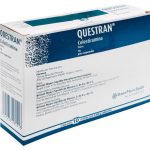Contents
Equipment and Medications Required for Endotracheal Intubation
Endotracheal intubation is a common, but involved and potentially traumatic procedure. It involves the use of 10 or more pieces of medical equipment, multiple medications, and a series of steps.
Endotracheal intubation is performed by inserting a flexible tube into the trachea through either the mouth or the nose. It is done during general anesthesia before surgery or in critically ill patients to help with breathing.
How is endotracheal intubation performed?
Endotracheal intubation is performed in three stages, each with different medications. The commonly used rapid sequence intubation protocol consists of the following steps:
- Pretreatment: The lungs are saturated with oxygen using a mask to ensure continuous oxygen circulation during the procedure. IV medications are administered to control pain and reflex responses to intubation, such as elevated blood pressure, increased heart rate, intracranial hypertension, coughing, and gagging.
An anesthesiologist inserts an endotracheal tube through the mouth into the airway with the help of a lighted device called a laryngoscope, and then secures it in place.
What equipment is needed for endotracheal intubation?
The following equipment is required for endotracheal intubation:
- Laryngoscope: A handle with a curved blade that has a light. It is inserted behind the tongue to visualize the epiglottis, a cartilage at the entrance of the trachea.
- Endotracheal tube: A thin, flexible tube with an inflatable balloon (cuff) that is placed inside the airway. The balloon is inflated to prevent gases from leaking and to enable positive pressure ventilation while preventing gastric fluid from entering the trachea.
- Stylet: A thin, malleable rod or wire that is placed inside the tube to facilitate insertion. It can be bent to fit the curvature of the airway, minimizing trauma.
- Syringe: Used to inflate the balloon in the tube.
- Suction catheter: A tube used to suction out secretions and prevent aspiration.
- Carbon dioxide detector: A device that confirms the correct position of the tracheal tube by measuring exhaled carbon dioxide.
- Oral airway: A device that conforms to the shape of the tongue and is placed in the mouth to maintain clear airways.
- Nasal airway: A device used to keep the nasopharyngeal airway clear.
- Bag-valve-mask: A mask used for preoxygenation.
- Nasal cannula: A tube with two prongs inserted into the nostrils to provide supplemental oxygen.
What medications are required for endotracheal intubation?
The medications used during the three stages of rapid sequence intubation include:
Pretreatment
Pretreatment medications are administered two to three minutes before intubation. Commonly used pretreatment medications for sedation and pain relief include:
Sedatives
Fentanyl is the primary sedative agent used before intubation. It has an immediate onset and lasts up to an hour.
- Other effects: Reduces hypertensive response
- Risks: High doses can cause hypotension and chest wall rigidity
Alternatives to fentanyl include sufentanil, alfentanil, and lidocaine. Lidocaine has both local anesthetic properties and can be used locally or intravenously. It has an onset time of up to two minutes and lasts for up to 20 minutes.
- Reduces the risk of postoperative sore throat from the tube
- Useful for decreasing hypertensive response in patients with asthma or COPD
- Risks: Hypotension
Other medications
Other pretreatment medications may include esmolol and dexamethasone. Esmolol is a beta-blocker used in combination with reduced doses of fentanyl or lidocaine to reduce hypertension. Dexamethasone is a steroid effective in reducing the incidence of postoperative complications, but it cannot be used in patients with diabetes mellitus, pregnancy, or other contraindications to corticosteroids.
Atropine
Atropine is typically administered to pediatric patients. It has an onset of up to four minutes and lasts for up to four hours.
- Effects: Reduces saliva and bronchial secretions
- Risks: Increase in heart rate (tachycardia)
Muscle relaxants
In some cases, muscle relaxants may be used in small doses as pretreatment medications. Some commonly used muscle relaxants include vercuronium and rocuronium.
Induction
The choice of anesthetic agent for induction is based on the patient’s condition. Commonly used anesthetic agents include etomidate, ketamine, and propofol. They each have their advantages and disadvantages.
Paralysis
The commonly used paralytic agents for endotracheal intubation are succinylcholine, rocuronium, mivacurium, pancuronium, and cis-atracurium. Each has its own onset and duration of action.
Reversal of paralysis
Sugammadex sodium is a medication that can reverse the effects of longer-acting paralytic agents.
Please consult a medical professional for personalized advice regarding endotracheal intubation.


